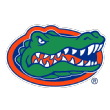Now that the NCAA has returned to sensible terminology, we can say this and mean it: For huge gains in your tournament pool this year, look toward the second round.
Trying to distinguish among teams seeded seventh through 10th is often a difficult task, but this season, it’s worth your time. A couple of Killertastic mid-majors and a whole batch of “Wounded Lions” are likely to land in the middle of brackets, carrying the qualities needed to pull off big upsets if they advance to the round of 32.
But so are several teams sorely lacking in Giant-Killing characteristics, including a bunch of also-rans from the Pac-12, home to many fine teams but which tends to breed very poor underdogs. As a result, there’s an enormous spread in the capacities of midbracket teams to take down this year’s top seeds -- a group that appears ripe for slaying. For example, our basic power rankings rate VCU as the 39th-best team in the country, just a hair behind California. But our statistical model sees the Rams as almost 52 points more likely than the Golden Bears to defeat an average Giant (Giant Killer Ratings: 61.0 and 9.2). Overall, the variance in GK Ratings among teams projected as 7-10 seeds by Joe Lunardi is more than four times the variance in their basic power ratings. It’s a real boom-or-bust group.
We have already offered our takes on Syracuse (GK Rating: 59.2) and VCU. Beyond them, there are five teams projected to land somewhere between a 7 and 10 seed that would catch our model’s eye, if it had eyes. Each has an impressive chance to beat a typical Giant, plus a statistical profile that fits one of the Giant Killer families we have identified. That’s important, because well-defined Davids knock off Goliaths far more often than programs that happen to be good teams but don’t play a particularly high-risk/high-reward style -- like, say, Saint Joseph’s (GK Rating: 11.5). Here, then, are potential second-round underdogs with bite, sorted by breed:
Slow Killers
 Wichita State Shockers (GK Rating: 51.3)
Wichita State Shockers (GK Rating: 51.3)
A lot of teams claim to have some reason for playing with a chip on their shoulder, but the Shockers have some serious grievances. This is a team that has won 30 or more games in each of the past three seasons, to be rewarded with only a 9-seed, a 1-seed (with an extraordinarily difficult path to the Final Four), and a 7-seed. And whose leader, point guard Fred VanVleet, was left off the roster for the 2014 Pan American Games and the list of finalists for this year’s Cousy Award. The snubbing is likely to continue in March, with Wichita State, the 17th-best team in the nation according to our basic power rankings, likely to land a 7 or 8-seed. Well, we know how to appreciate a Killer that could easily be a Giant. And as VanVleet’s great career draws to a close, here’s what you should know about the Shockers:
They have the best defense in the country, allowing just 89.4 points per 100 possessions after adjusting for opponents, according to KenPom.com.
Their style of play boosts their chances as an underdog and fits the definition of “Slow Killers” -- grabbing lots of offensive rebounds, limiting opponents’ close-range shooting, playing at a crawl -- except that Wichita State also forces gobs of turnovers (23.7 percent of opponent possessions, the fifth-best rate in the NCAA).
They are one of a select group of Killers to show adaptability in their style of play. Ramping up their high-risk/high-reward play helped them slay two Giants in 2013 in Gonzaga and Ohio State.
All of which is why we thought Wichita State would upend Kansas, a No. 2 seed, last year and why our model is confident in them again this season. And here’s a message for VanVleet: If you get forlorn, as folks in Wichita sometimes do, don’t worry -- there’s always the All-Giant Killers Team.
 Florida Gators (GK Rating: 31.3)
Florida Gators (GK Rating: 31.3)
The Gators are already playing faster than at any point in the final dozen years of the Billy Donovan era, but they still haven’t reached the full frenetic pace favored by Mike White’s squads at Louisiana Tech. They still cut off opponents’ inside shooting, but under White’s pressing system, they have also rebuilt their perimeter defense. And the Gators are hitting the offensive boards with greater intensity (34.1 percent of missed shots, ranking 48th in the NCAA), which helps compensate for poor shooting by just about everybody who isn’t named Dorian Finney-Smith. In sum, the Gators are in an interesting transitional period -- their best qualities are many of the characteristics that help underdogs. Also, they’ve been maddeningly inconsistent against a very tough schedule. If they were a Giant, that would worry you; as a Killer, it suggests they have a puncher’s chance against anyone.
 Wisconsin Badgers (GK Rating: 27.1)
Wisconsin Badgers (GK Rating: 27.1)
It can be fun to look at teams that are almost always Giants and consider how they might play as Killers. Until this season, Bo Ryan’s teams would have lined up perfectly as Slow Killers, controlling the defensive boards and protecting the ball at the pace of dripping -- if not frozen -- molasses. And after a series of awful losses to open this season and Ryan’s sudden departure in December, the Badgers are back in the glacial groove. Interim coach Greg Gard has finally moved Wisconsin past the loss of Frank Kaminsky by returning to the swing offense, which has improved spacing, gotten the ball to Nigel Hayes (16.7 PPG) and Bronson Koenig (13.4 PPG) and boosted shooting percentages all around. And while the revamped Badgers aren’t as obsessive about the defensive glass as they were under Ryan, they are forcing more turnovers, which means their defensive efficiency has actually improved from last season, to 36th best in the country. With a tempo as thudding as ever (341st in the nation), Wisconsin has emerged over the past seven weeks as a Killer whom Giants will find it very hard to shake. Badgers fans should enjoy the role reversal this March.
Perimeter Killer
 Michigan Wolverines (GK Rating: 42.4)
Michigan Wolverines (GK Rating: 42.4)
It hasn’t been the easiest season for Michigan. Caris LeVert hurt his leg, tried to come back and is now out indefinitely. Spike Albrecht retired -- although he is now back working with the team, with an eye toward possibly returning next season. And the team has lost nine games against a tough schedule. But John Beilein has always employed a style befitting a Killer, and Michigan looms as a dangerous tourney foe.
Why? The Wolverines shoot 3s. Lots of 3s. Nearly half of Michigan’s field goal attempts (45.3 percent) come from 3-point range. And the Wolverines knock down those bombs at a 40.1 percent clip. So they are the classic example of a team that can get hot on the right day and take down anyone, as Maryland learned when the Wolverines hit 12 triples in upsetting the Terps back on Jan. 12.
That offensive approach is necessary because the inside duo of Mark Donnal and Ricky Doyle doesn’t exactly send opposing coaches to the dry-erase board in search of a clever defensive scheme. So Michigan relies on its guards, who not only shoot the ball well but protect it -- the Wolverines turn it over on just 14.7 percent of possessions, 10th in the country. And that offensive efficiency is critical because Michigan’s defense can be disastrous at times. The Wolverines give up an adjusted 102.5 points per 100 possessions and allow an effective field goal percentage of 51.1 -- 235th in the country. But if LeVert can somehow find his way back for the tourney, the thought of Michigan spreading the floor around him with Duncan Robinson, Zak Irvin and Derrick Walton Jr. is a scary, scary image for a top seed.
High-Possession Killer
 Pittsburgh Panthers (GK Rating: 40.3)
Pittsburgh Panthers (GK Rating: 40.3)
Yet another big-name program that will have to take on a Killer outlook this March, Pittsburgh goes about its business in a decidedly different way from Michigan. The Panthers prefer to shoot from close range: Only 30.8 percent of their field goal attempts are 3s. And when they miss, they go get the ball back, as their 38.4 percent offensive rebound rate ranks 10th nationally. Burly forward Michael Young (16.3 PPG, 7 RPG) does much of that work inside, with Rafael Maia (15.2 offensive rebound percentage), Sheldon Jeter (11.0) and Ryan Luther (12.1) providing plenty of help.
We’d love Pittsburgh’s chances even more if it fully embraced what it meant to be a member of the High-Possession GK Clan and gambled more on defense. But the Panthers force turnovers on just 17 percent of opponents’ possessions. Defense, in fact, is likely to be Pitt’s undoing. Despite the Panthers’ reputation for playing a physical, grinding style, rumors of their defensive prowess have been somewhat of a mirage over the years, distorted by their slow pace. This season, they rank just 105th nationally in defensive efficiency; last season they were 202nd. Despite the effort their bigs give on the boards, they don’t exactly excel at protecting the rim: Not one Panther blocks even a single shot per game. Still, with their board work enhancing an efficient offense, Pittsburgh looks like a handful for a potential second-round foe.
